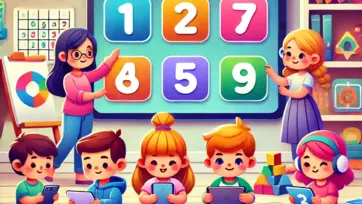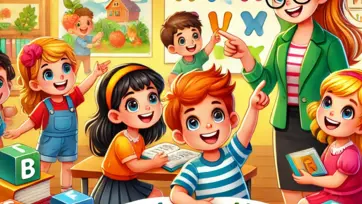Emotional intelligence (EI) is a critical life skill that allows individuals to understand, express, and manage their emotions effectively. For children, developing emotional intelligence at an early age sets the foundation for healthier relationships, better decision-making, and overall well-being. By teaching kids to identify, understand, and regulate their emotions, we equip them with tools to navigate life's challenges with confidence and empathy.
What Is Emotional Intelligence?
Emotional intelligence is the ability to recognize and manage one’s own emotions, understand the emotions of others, and use this awareness to guide interactions and decisions. Psychologist Daniel Goleman, a leading expert on emotional intelligence, outlines five key components:
- Self-Awareness: Recognizing one’s emotions and their impact.
- Self-Regulation: Managing emotions in a healthy way.
- Motivation: Using emotions to achieve goals and stay focused.
- Empathy: Understanding and sharing the feelings of others.
- Social Skills: Building and maintaining positive relationships.
Teaching these skills to children can be fun and engaging through stories, songs, and activities.
Why Emotional Intelligence Matters for Kids
Children with high emotional intelligence often excel in areas such as:
- Academic Success: Emotional regulation helps kids focus on tasks and manage stress during challenges.
- Social Relationships: Understanding their own emotions and those of others fosters empathy and effective communication.
- Resilience: Emotional intelligence helps kids cope with setbacks and adapt to changes.
How to Teach Emotional Intelligence to Kids
Here are some effective strategies for building emotional intelligence in children:
1. Identify Emotions
Help kids recognize and name their emotions by introducing an emotional vocabulary. Words like happy, sad, angry, frustrated, excited, and proud allow children to articulate how they feel.
Activity: Emotion Wheel
Create an emotion wheel with faces and labels for different feelings. Encourage kids to point to the emotion they’re experiencing and explain why they feel that way.
2. Understand Emotions
Teaching children why they feel certain emotions helps them develop self-awareness.
Activity: Storytime
Read stories where characters experience a range of emotions. Pause to ask questions like, “How do you think the character feels?” or “What would you do in their situation?”
3. Manage Emotions
Equip kids with strategies to manage overwhelming emotions like anger or anxiety. Techniques such as deep breathing, counting to ten, or using a stress ball can help.
Activity: Calm Down Corner
Set up a quiet space with calming tools like soft cushions, fidget toys, and coloring supplies. Teach kids to use this area when they need to regulate their emotions.
4. Practice Empathy
Encourage children to consider the feelings of others and respond with kindness.
Activity: Empathy Role-Play
Role-play scenarios where kids imagine being in someone else’s shoes. For example, “How would you feel if your friend lost their favorite toy?”
5. Build Social Skills
Teach kids how to express their emotions constructively and interact positively with others.
Activity: The Compliment Game
During group activities, encourage kids to give each other compliments. This boosts confidence and fosters positive interactions.
Songs and Stories for Emotional Learning
Music and storytelling are powerful tools for teaching emotional intelligence. Here are some examples:
-
Songs:
- “If You’re Happy and You Know It” for identifying emotions.
- “Breathe In, Breathe Out” for calming techniques.
- “We’re All in This Together” for promoting empathy and teamwork.
-
Stories:
- The Feelings Book by Todd Parr: A colorful introduction to different emotions.
- When Sophie Gets Angry – Really, Really Angry by Molly Bang: A story about managing anger.
- Have You Filled a Bucket Today? by Carol McCloud: Encourages kindness and empathy.
The Role of Parents and Educators
Adults play a vital role in fostering emotional intelligence in children. Here’s how parents and educators can support this development:
1. Model Emotional Intelligence
Children learn by observing. Demonstrate healthy emotional regulation, empathy, and positive communication in your interactions.
2. Encourage Open Communication
Create an environment where children feel safe to express their emotions. Listen actively and validate their feelings without judgment.
3. Set Boundaries
Teach kids that while all emotions are valid, certain behaviors may not be acceptable. For example, it’s okay to feel angry, but hitting is not acceptable.
4. Reinforce Positive Behavior
Praise children when they demonstrate emotional intelligence, such as showing kindness or managing frustration.
The Long-Term Benefits of Emotional Intelligence
Investing in emotional intelligence during childhood has lifelong benefits:
- Improved Relationships: Kids with strong EI form healthier friendships and partnerships.
- Career Success: Emotional intelligence is a key skill in leadership and teamwork.
- Mental Health: Understanding and managing emotions reduces the risk of anxiety, depression, and other mental health challenges.
Conclusion
Building emotional intelligence in children is a journey that benefits them throughout their lives. By incorporating stories, songs, and activities into daily routines, we can teach kids how to identify, understand, and manage their emotions while fostering empathy and social skills. Whether through an emotion wheel, a calm-down corner, or a heartfelt story, these small efforts create big impacts, shaping emotionally intelligent individuals ready to face the world with resilience and compassion.








